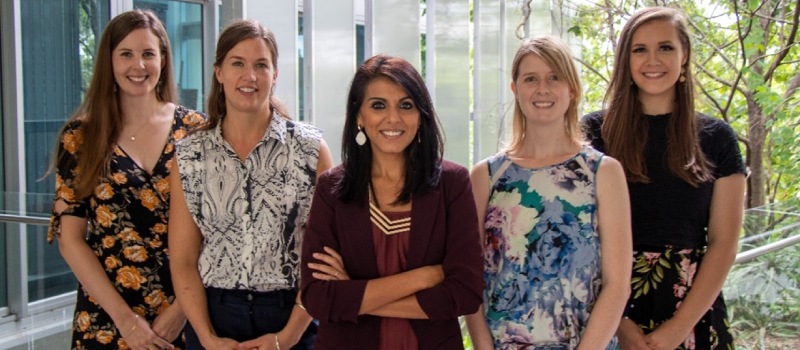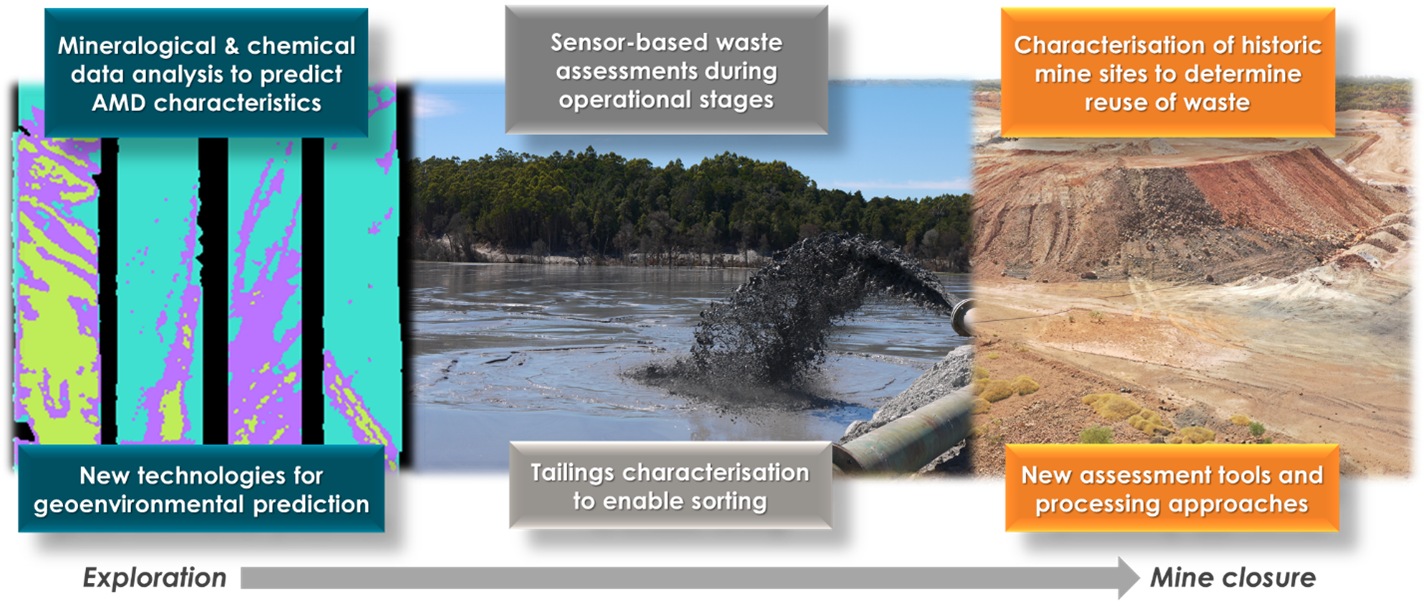New research group set to tackle the challenges of mine waste
A new research group at The University of Queensland’s Sustainable Minerals Institute (UQ SMI) has developed a set of geometallurgical toolkits to improve the management of waste in the mining industry.

The Mine Waste Transformation through Characterisation (MIWATCH) Group, based at SMI’s WH Bryan Mining and Geology Research Centre, uses chemical, mineralogical, mineral chemistry, physical, and metallurgical testing tools to determine the properties of mine waste and assess how it should be best managed to reduce environmental risks.
Group leader Dr Anita Parbhakar-Fox said the group has developed integrated toolkits for use at the start of a mining project and also where mine waste already exists.
'The difference with this research is that for new mining projects we are able to understand the geo-environmental anatomy of a future deposit in more detail using a combination of established industry tools and new technologies,' Dr Parbhakar-Fox said.
'For existing waste, our approach enables us to identify reuse options based on measured waste properties, for example the extraction of critical metals for new technologies.
'We seek to fundamentally understand the mineralogical properties and evaluate the heterogeneity of the existing or future waste.
'Through this process we can deliver to industry new information to help them reduce future environmental liabilities and transform mine waste into something usable.'

The MIWATCH group has several major projects in progress, including a 4-year project funded by the Queensland State Government that is focused on secondary prospectivity in the state’s mine waste.
'We have already characterised 15 sites across the state as part of our "first pass" characterisation program, and have plans to start drilling a site for more detailed sampling and analysis at another later this year,' Dr Parbhakar-Fox said.
'Another three major projects are about to come online concentrating on secondary prospectivity more broadly across Australia, so the team are certainly getting out to the field for mine waste mapping and sampling.
'Our other research theme is focused on the early geometallurgical characterisation of future mine waste and we have projects underway to deliver new methods by which to use early exploration phase data to forecast geo-environmental properties of future waste materials.'
The MIWATCH group members come from a range of mining-related disciplines, including exploration geology, geochemistry and hydrogeology.
'The main driver when assimilating the group was to identify scientists with a deep passion for continued environmental improvement in the mining sector.
'And we are not working on this challenge in isolation; we have strong collaborative links across SMI and UQ which helps us deliver the most effective outcomes and solutions for the industry.'
The MIWATCH team
Dr Anita Parbhakar-Fox: Dr Anita Parbhakar-Fox has been working in environmental geoscience for 15 years. Anita started out in 2006 as an environmental consultant in London, UK after completing her geoscience degree at the Royal School of Mines, Imperial College, UK.
Dr Laura Jackson: Dr Laura Jackson is an environmental geologist and a Research Fellow specialised in applied geochemistry and geometallurgy. Laura obtained her PhD at the Centre for Ore Deposit and Earth Sciences (CODES), University of Tasmania (2020).
Dr Anne Whitworth: Dr Anne Whitworth is a geoscientist specialised in environmental geochemistry and hydrogeology. Anne completed her PhD at Monash University in 2020 where she studied and published multiple papers on the formation and behaviour of jarosite in acidic, sulphate-rich environments.
Loren Nicholls: Loren Nicholls is an experienced exploration geologist specialising in applied geochemistry, mineralogy and ore body knowledge, who has returned to the University of Queensland’s Sustainable Minerals Institute (SMI) to undertake her PhD research.
Olivia Mejías: Olivia Mejías is a Chilean geologist with a master’s degree in applied mineralogy to geometallurgy. She has industrial experience working at El Teniente underground mine, working in short-term geometallurgy, production geology and the successful promoting of mine-plant integration.
Enrique Sáez Salgado: Enrique Sáez Salgado is a Chilean geologist with experience in both mineral exploration and academia. Enrique obtained his BSc in 2013 and professional degree in 2016, working in polymetallic deposit tailings from southern Chile.
Kristen Isbel: Kristen Isbel is a geoscientist whose studies focused on geochemistry, hydrogeology and water chemistry. Kristen completed her Honours at Monash University in 2020.
To learn more about MIWATCH or contact the team, please visit the UQ SMI website: https://smi.uq.edu.au/miwatch-mine-waste-transformation-through-characterisation
